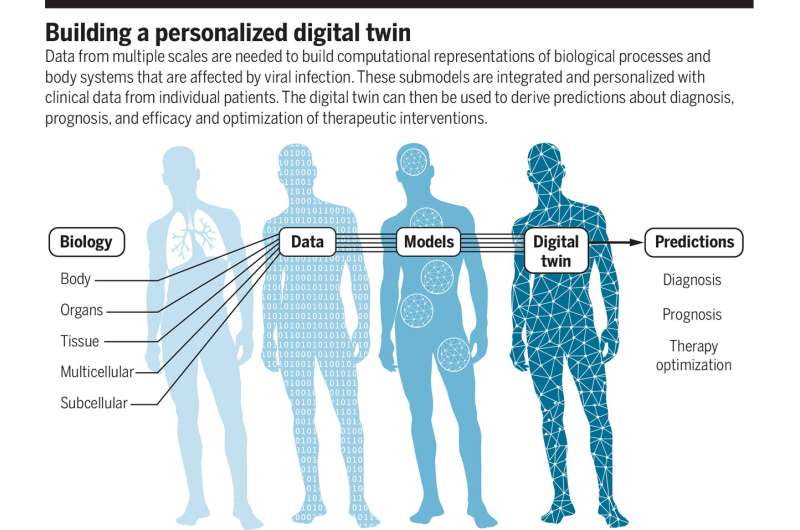
What if you had a twin who doctors could work with to predict your future health care needs or how a particular virus might affect you? Obviously, we can’t experiment on a real clone of ourselves, but we can research different scenarios with a digital twin.
That’s the solution an Indiana University researcher is suggesting in order to predict individuals’ future health care needs as well as to prepare to respond more quickly and effectively to future pandemics.
James Glazier, a professor of intelligent systems engineering at the IU Luddy School of Informatics, Computing and Engineering, along with co-authors James Sluka from IU’s Biocomplexity Institute and Reinhard Laubenbacher from the University of Florida, make the case for creating improved mathematical models of human health and disease using digital twins. They say that digital twins applied to the human body could lead to better health care outcomes and faster responses to novel diseases.
“Digital twins combine a computer model that predicts how the state of a system will evolve with real-time measurements of individuals,” said Glazier, whose perspective was published in the journal Science. “Medicine, at the moment, is largely reactive: You go to the doctor when you’re sick, or after there’s a major problem. Ideally, what we’d like to be able to do is predict when there’s going to be a problem and make small interventions to prevent the problem from ever becoming serious.”
Glazier and his colleagues suggest that digital twins could help make predictions for viral infection and the immune response, which allow rapid design of interventions to make people healthier. Digital twins would allow doctors and medical professionals to perform controlled and repeatable experiments to discover how outcomes differ for various interventions, enabling rapid section of optimal interventions.
“Medicine lacks a key component of scientific practice because you can’t perform controlled experiments at the level of individuals,” Glazier said. “Digital twins solve this problem by allowing virtual experiments and controls in which we evaluate what will happen to a specific individual given a specific treatment.”
Digital twins also could model not only what the COVID-19 pandemic looks like for an individual but what a future pandemic could be like. Patients with COVID-19 can vary drastically in the severity of their symptoms, despite having the same virus. Although multiple pre-existing conditions have been identified that can raise the risk of severe illness with COVID-19, there’s currently no way to predict in detail how an individual will react to being infected or to the treatments available.
Digital twins could change this by providing a better understanding of an individual’s immune system, as well as why some vaccines induce a strong and immediate immune response with lifetime protection while others offer a weaker response and dissipating protection.
“The COVID-19 pandemic has revealed that we don’t understand the immune system well enough at the individual level to be able to design optimal treatments,” Glazier said. “If we can build models that are able to explore how these immune responses work, we can potentially design better vaccination strategies.”
Glazier and his colleagues are hopeful that with more use of digital twins, the ability to battle not only known illnesses, such as COVID-19, influenza and cancer, but those completely unknown will be enhanced.
Source: Read Full Article
